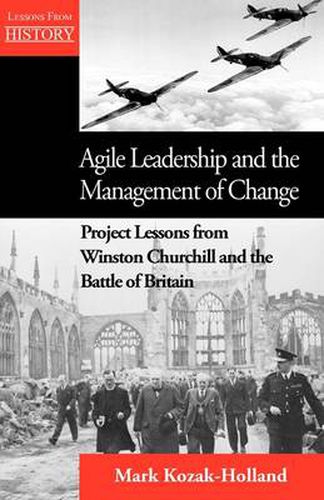Readings Newsletter
Become a Readings Member to make your shopping experience even easier.
Sign in or sign up for free!
You’re not far away from qualifying for FREE standard shipping within Australia
You’ve qualified for FREE standard shipping within Australia
The cart is loading…






Around the turn of the millennium, there was a poll conducted in Britain that asked who people thought was the most influential person in all of Britain’s history. The winner: Winston Churchill. What set Churchill above the others was his leadership qualities: his ability to create and share a powerful vision, his ability to motivate the population in the face of tremendous fear, and his ability to get others to rally behind him and quickly turn his visions into reality. By any measure, Winston Churchill was a powerful leader. What many don’t know, however, was how Churchill used his leadership skills to restructure the British military, government, and even the British manufacturing sector to support his efforts to rearm the country and get ready for an imminent enemy invasion in early 1940. Churchill started making massive changes immediately after his appointment as Prime Minister, with little time for preparation. That summer, British and German aircraft skirmished in the skies above Britain in preparation for a full German assault on the island nation. Churchill’s adaptive sense-and-respond approach to the invaders made the Royal Airforce much more agile and responsive to the changing situation, allowing them to repel a much larger and better-equipped enemy. In addition, his changes to the manufacturing sector allowed the nation to dramatically speed up the production of new aircraft to replace their staggering losses. A lot can be learned about how he managed this enormous change effort. Fortunately, documents and other evidence exists that explains how he did it. Join author Mark Kozak-Holland as he explores how Churchill acted as the head project manager of a massive change project that affected the daily lives of millions of people. Learn about Churchill’s change management and agile management techniques and how they can be applied to today’s projects.
$9.00 standard shipping within Australia
FREE standard shipping within Australia for orders over $100.00
Express & International shipping calculated at checkout
Around the turn of the millennium, there was a poll conducted in Britain that asked who people thought was the most influential person in all of Britain’s history. The winner: Winston Churchill. What set Churchill above the others was his leadership qualities: his ability to create and share a powerful vision, his ability to motivate the population in the face of tremendous fear, and his ability to get others to rally behind him and quickly turn his visions into reality. By any measure, Winston Churchill was a powerful leader. What many don’t know, however, was how Churchill used his leadership skills to restructure the British military, government, and even the British manufacturing sector to support his efforts to rearm the country and get ready for an imminent enemy invasion in early 1940. Churchill started making massive changes immediately after his appointment as Prime Minister, with little time for preparation. That summer, British and German aircraft skirmished in the skies above Britain in preparation for a full German assault on the island nation. Churchill’s adaptive sense-and-respond approach to the invaders made the Royal Airforce much more agile and responsive to the changing situation, allowing them to repel a much larger and better-equipped enemy. In addition, his changes to the manufacturing sector allowed the nation to dramatically speed up the production of new aircraft to replace their staggering losses. A lot can be learned about how he managed this enormous change effort. Fortunately, documents and other evidence exists that explains how he did it. Join author Mark Kozak-Holland as he explores how Churchill acted as the head project manager of a massive change project that affected the daily lives of millions of people. Learn about Churchill’s change management and agile management techniques and how they can be applied to today’s projects.